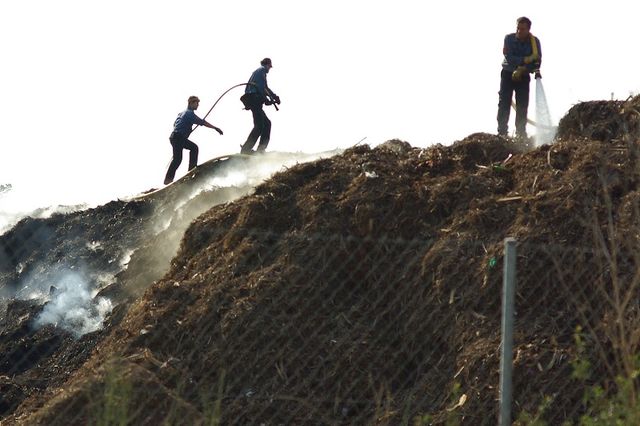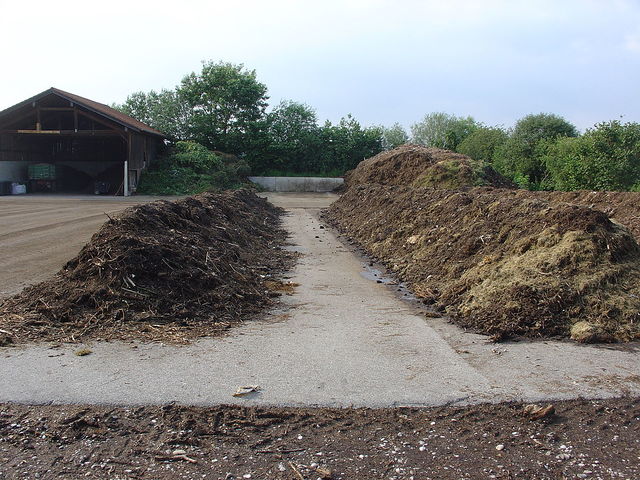Compost Volatiles: Difference between revisions
Jump to navigation
Jump to search
mNo edit summary |
|||
| Line 16: | Line 16: | ||
* ketones | * ketones | ||
* toluene, ethylbenzene, 1,4-dichlorobenzene, p-isopropyl toluene, and naphthalene | * toluene, ethylbenzene, 1,4-dichlorobenzene, p-isopropyl toluene, and naphthalene | ||
==Possible Approach== | |||
After capture of the compost exhaust, it should be cooled down for condensation. Many of the VOCs of interest will have a condensation point above or not far from 0 degrees C. What remains in the gaseous phase after that will be mostly CO2, N2, and O2 (discard). The watery solution can then be heated again (evaporation) and cooled again (condensation). Further steps will be necessary depending on what you want to isolate. | |||
==Related Pages== | ==Related Pages== | ||
Revision as of 00:14, 29 August 2016
Composting releases volatile organic compounds (VOCs). Some of them may be interesting as biofuels or chemicals. The gaseous emissions would have to be condensed first and then refined (separated). The spectrum of VOCs differs by type of composting, feedstock, aeration, etc.
Some Chemical Components
- alcohols (e.g. ethanol)
- carbonyl compounds
- terpenes
- esters
- sulphur compounds
- ethers
- alkylated benzenes
- alkanes
- ketones
- toluene, ethylbenzene, 1,4-dichlorobenzene, p-isopropyl toluene, and naphthalene
Possible Approach
After capture of the compost exhaust, it should be cooled down for condensation. Many of the VOCs of interest will have a condensation point above or not far from 0 degrees C. What remains in the gaseous phase after that will be mostly CO2, N2, and O2 (discard). The watery solution can then be heated again (evaporation) and cooled again (condensation). Further steps will be necessary depending on what you want to isolate.

